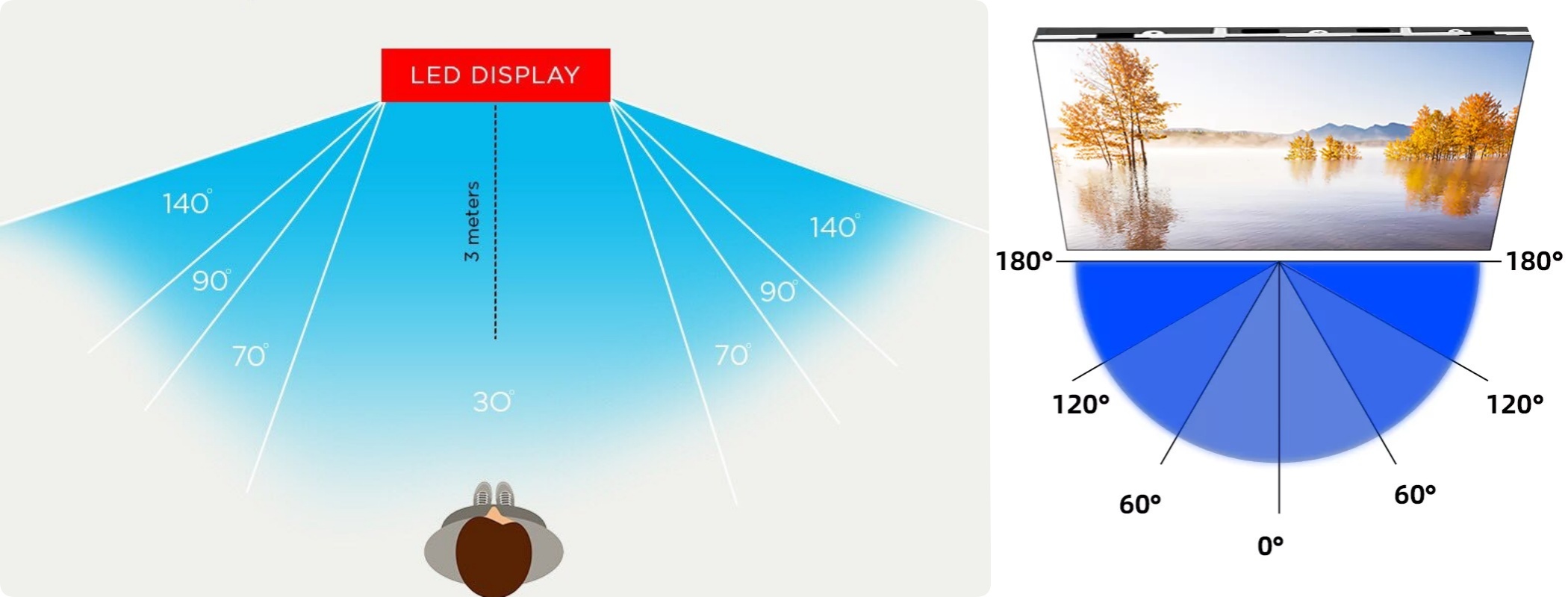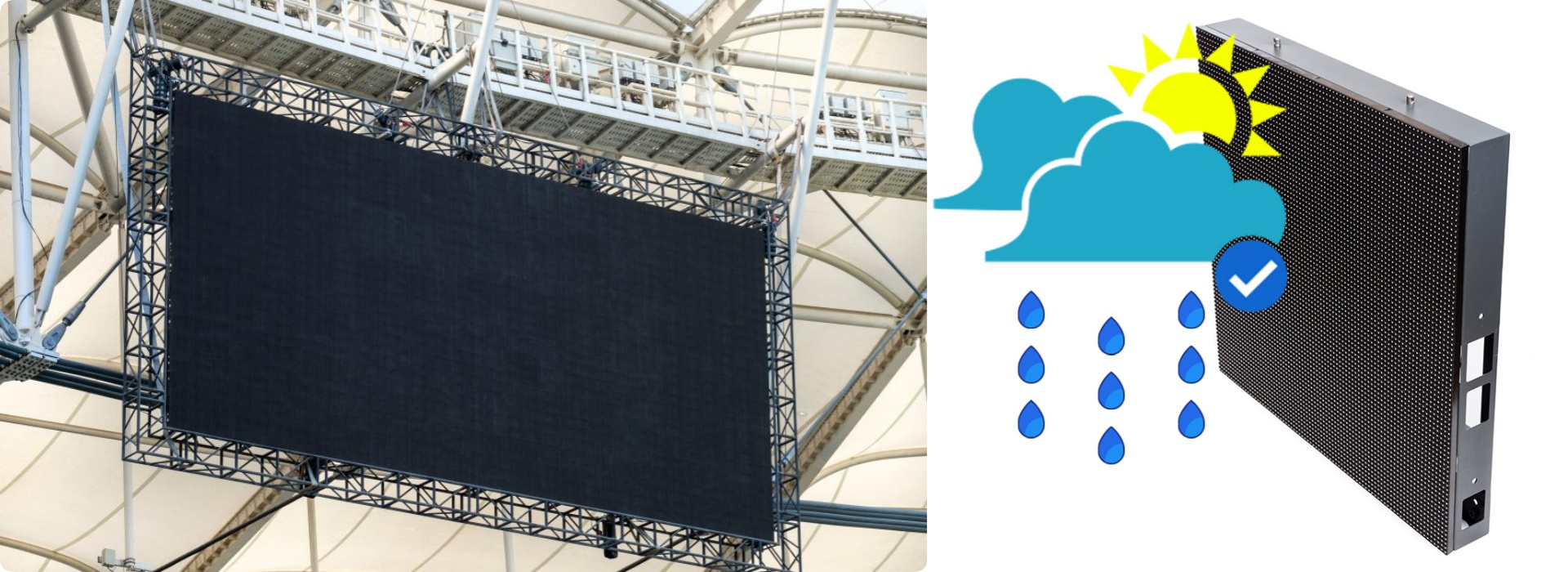1. Introduction
LED displays have become important devices in a variety of settings. Understanding the differences between indoor and outdoor LED displays is crucial as they differ significantly in design, technical parameters and application scenarios. This article will focus on comparing indoor and outdoor LED displays in terms of brightness, pixel density, viewing angle and environmental adaptability. By reading this article, readers will be able to gain a clear understanding of the differences between the two types, providing guidance on choosing the right LED display.
1.1 What is LED Display?
LED display (Light Emitting Diode Display) is a kind of display equipment using light-emitting diode as a light source, which is widely used in all kinds of occasions because of its high brightness, low energy consumption, long life, fast response speed and other characteristics. It can display colorful images and video information, and is an important tool for modern information dissemination and visual display.
1.2 The importance and significance of indoor and outdoor LED displays
LED displays are categorized into two main types, indoor and outdoor, based on the environment in which they are used, and each type differs significantly in design and function. Comparing and understanding the characteristics of indoor and outdoor LED displays is important for choosing the right display solution and optimizing its application.
2.Definition and Application Scene
2.1 Indoor LED Display

Indoor LED display is a kind of display equipment designed for indoor environment, adopting light emitting diode as the light source, featuring high resolution, wide viewing angle and high color reproduction. Its brightness is moderate and suitable for use under relatively stable lighting conditions.
2.2 Commonly used indoor LED display scenes
Conference Room: Used to display presentations, video conferences and real-time data to enhance meeting efficiency and interactivity.
Studio: Used for background display and real-time screen switching in TV stations and webcasts, providing high-definition image quality.
Shopping malls: Used for advertising, information display and brand promotion to attract customers’ attention and enhance shopping experience.
Exhibition displays: used in exhibitions and museums for product displays, information presentation and interactive displays, enhancing the audience’s visual experience.
2.3 Outdoor LED Display

Outdoor LED display is a display device designed for outdoor environment with high brightness, waterproof, dustproof and UV resistance, which is able to work normally under various weather conditions. It is designed to provide clear visibility over long distances and wide viewing angle coverage.
2.4 Common uses for outdoor LED displays
Billboards: Used to display commercial advertisements and promotional content to reach a wide audience and enhance brand awareness and market influence.
Stadiums: Used for real-time score display, live streaming of events and audience interaction to enhance the viewing experience and atmosphere of the event.
Information displays: in public places such as airports, train stations, bus stops and subway stations, providing real-time traffic information, announcements and emergency notifications, facilitating public access to important information.
City squares and landmarks: for live broadcasting of large events, festival decoration and city promotion
3. Comparison of Technical Parameters
Brightness
Brightness Requirement of Indoor LED Display
Indoor LED display typically requires a low level of brightness to ensure that it is not blinding when viewed under artificial light and natural light conditions. Typical brightness ranges from 600 to 1200 nits.
Brightness Requirements for Outdoor LED Display
Outdoor LED display needs to be very bright to ensure that it remains visible in direct sunlight or bright light. Brightness is typically in the range of 5000 to 8000 nits or even higher to cope with a variety of weather conditions and light variations.
Pixel Density

Pixel Density of Indoor LED Display
Indoor LED display has a high pixel density for close viewing. Typical pixel pitch is between P1.2 and P4 (i.e., 1.2 mm to 4 mm).
Pixel Density of Outdoor LED Display
The pixel density of outdoor LED display is relatively low as it is usually used for long-distance viewing. Typical pixel pitches range from P5 to P16 (i.e., 5 mm to 16 mm).
Viewing Angle

Indoor Viewing Angle Requirements
Horizontal and vertical viewing angles of 120 degrees or more are generally required, and some high-end displays can even reach 160 degrees or more to accommodate a variety of indoor layouts and viewing angles.
Outdoor Viewing Angle Requirements
Horizontal viewing angles are usually 100 to 120 degrees, and vertical viewing angles are 50 to 60 degrees. These viewing angle ranges can cover a large range of viewers while maintaining good image quality.
4. Environmental Adaptability

Waterproof and Dustproof Performance
Protection Level of Indoor LED Display
Indoor LED display usually does not require high protection ratings because it is installed in relatively stable and clean environments. Typical protection ratings are IP20 to IP30, which protects against a certain degree of dust ingress but does not require waterproofing.
Protection Ratings for Outdoor LED Display
Outdoor LED display needs to have a high level of protection to cope with all kinds of harsh weather conditions. Protection ratings are typically IP65 or higher, which means that the display is completely protected from dust ingress and can withstand spraying water from any direction. In addition, outdoor displays need to be UV resistant and resistant to high and low temperatures.
5.conclusion
In summary, we understand the differences between indoor and outdoor LED displays in brightness, pixel density, viewing angle, and environmental adaptability. Indoor displays are suitable for close viewing, with lower brightness and higher pixel density, while outdoor displays require higher brightness and moderate pixel density for different viewing distances and lighting conditions. Additionally, outdoor displays need good waterproofing, dustproofing, and high protection levels for harsh outdoor environments. Therefore, we must choose the right LED display solution for different scenarios and requirements. For more information about LED displays, please contact us.
Post time: Jun-06-2024





